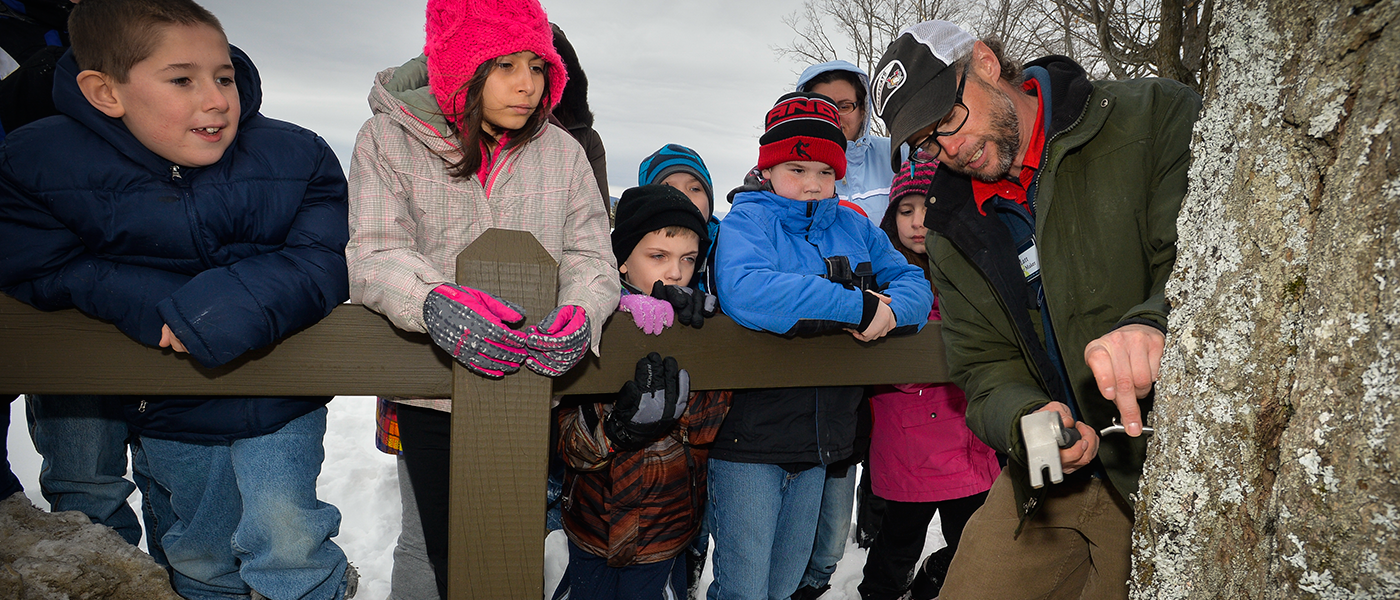
From Sap to Syrup - Maple Then and Now
My first maple experience (besides smothering French Toast with it)
I was in about third or fourth grade when I had my first real experience with the maple sugaring process. I was out in the yard playing in the snow when I noticed a bucket hanging from the side of our giant maple tree. Quick side note: As I tell this story I am struck with sadness, as I remember how devastated I was years later when we needed to cut that tree down. You would think that living in such a beautiful area surrounded by the number of trees that we have, that you couldn’t get so attached to just one. But I think that old tree out in Piercefield will always be my favorite. I remember endless hours of swinging with my friends on the old tire-swing that hung from one of its giant branches, I remember playing in its leaves every fall, and it was a favorite hiding place during the town-wide games of hide-and-go-seek. I will always have a special place in my heart for that old maple tree.
Okay, back to my story. Once I noticed the bucket hanging from the tree, I went closer and saw that a small metal spout was also attached. I won’t lie, I was immediately concerned that someone was hurting “my tree.” Seriously, someone drilled a hole into it and they were now using it to hang a bucket. Really, they couldn’t find a better place to hang a bucket than on my favorite tree? I went to tell my parents and they pointed out that some other trees around the neighborhood also had the same weird contraptions attached to them. They then explained that our neighbors (and good friends) were making maple syrup. Once I got over the initial shock, I was okay with the concept. Once I got to watch them make the syrup and try some “maple sugar on snow,” I was ready for them to hang as many buckets around my tree as they wanted to.
The Wild Center’s Community Maple Program
Today, thanks to The Wild Center’s Maple Program, visitors and residents alike can see, taste, and even take part in the maple sugaring process. Back in 2011, The Wild Center began exploring a unique way to connect people to nature through food by piloting a community maple sugaring program. The concept was to invite the community to tap their own trees. The Center provided them with the taps, buckets, and instruction needed to get started. Once the sap started flowing, staff from The Wild Center went out to collect the sap and brought it back to their portable sugaring shack at the museum. The Center processed the sap into syrup and then split it with the community members who were participating in the program. The first year 22 families participated in the program and over 100 people from around the region attended the Maple Workshops that they hosted. In addition, they also were able to connect children at the neighboring elementary school to the program by creating educational workshops that they brought into the classrooms. They would then have the kids get dressed in their winter gear and accompany them outside to tap the trees in front of the school.
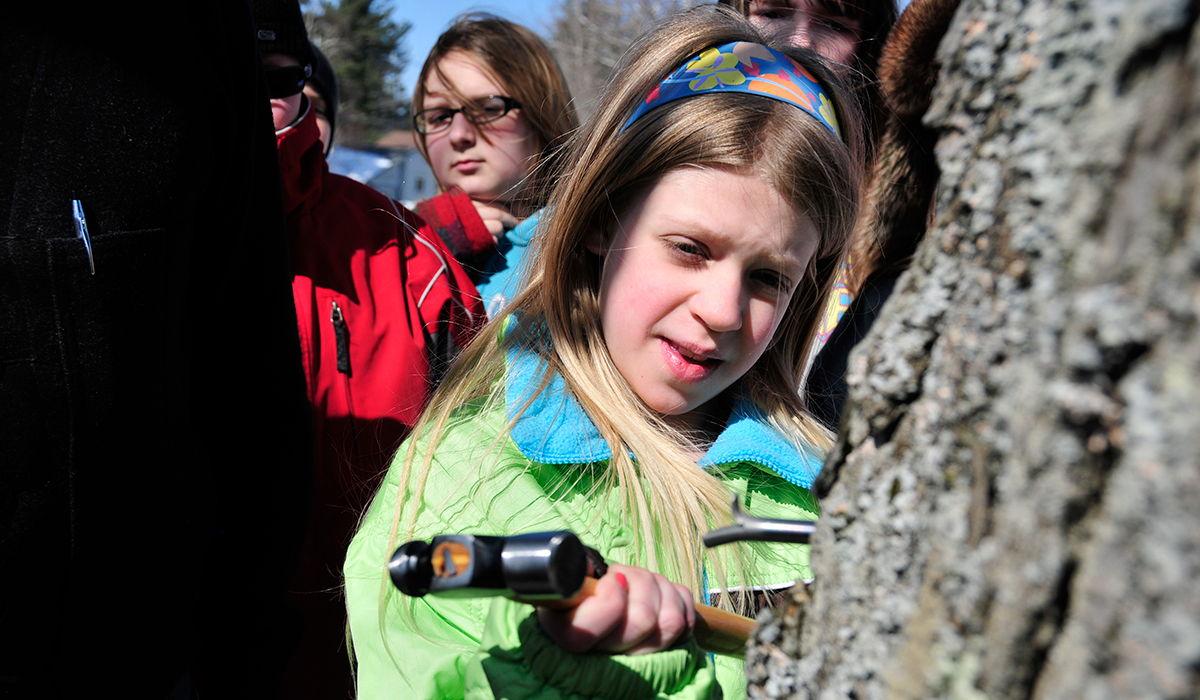
The pilot program was a huge success and built a foundation to what is today a growing program and exhibit within The Wild Center. The following year, with the help of a Northern Border Regional Commission grant, The Wild Center was able to continue to expand the program by building their own sugar shack, purchasing evaporators, and expanding the number of buckets, taps, and other equipment necessary to build and maintain a strong community maple program. By 2014 more than 80 families and 1,000 taps were involved in the program.
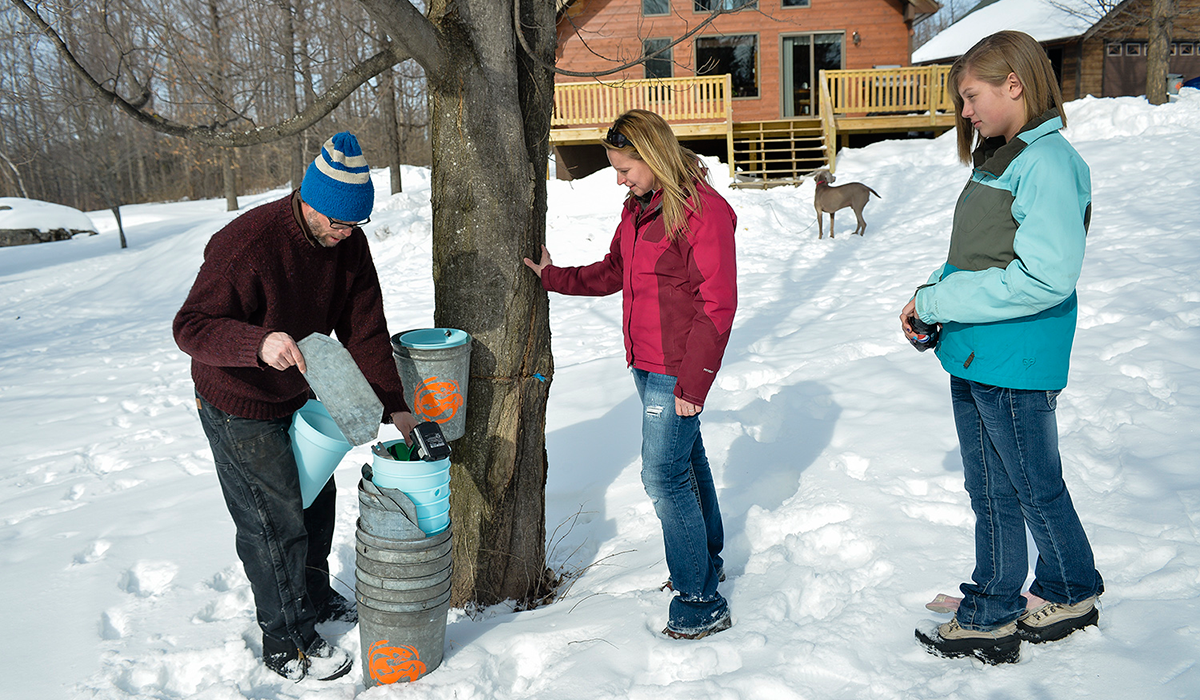
Maple programs at The Wild Center
In addition to The Wild Center’s Community Maple Program, the museum also offers a variety of different elements to connect the visitor to the maple sugaring process including the build out of a new permanent maple exhibit at the lean-to adjacent to the Big Wolf Great Hall. Recently, I took a private tour of the new exhibit with Dave St. Onge, The Wild Center’s facilities manager and sugar maker. He was kind enough to walk me through some of the neat interactive elements of the new exhibit and we discussed some of the future elements they plan on adding thanks to the help of an IMLS (Institute of Museum and Library Services) grant. This really is a great addition to this growing museum. It begins by walking you through the rich history of maple syrup in the Tupper Lake and Piercefield region, then invites you to share your maple moments, experiences, and even recipes with them.
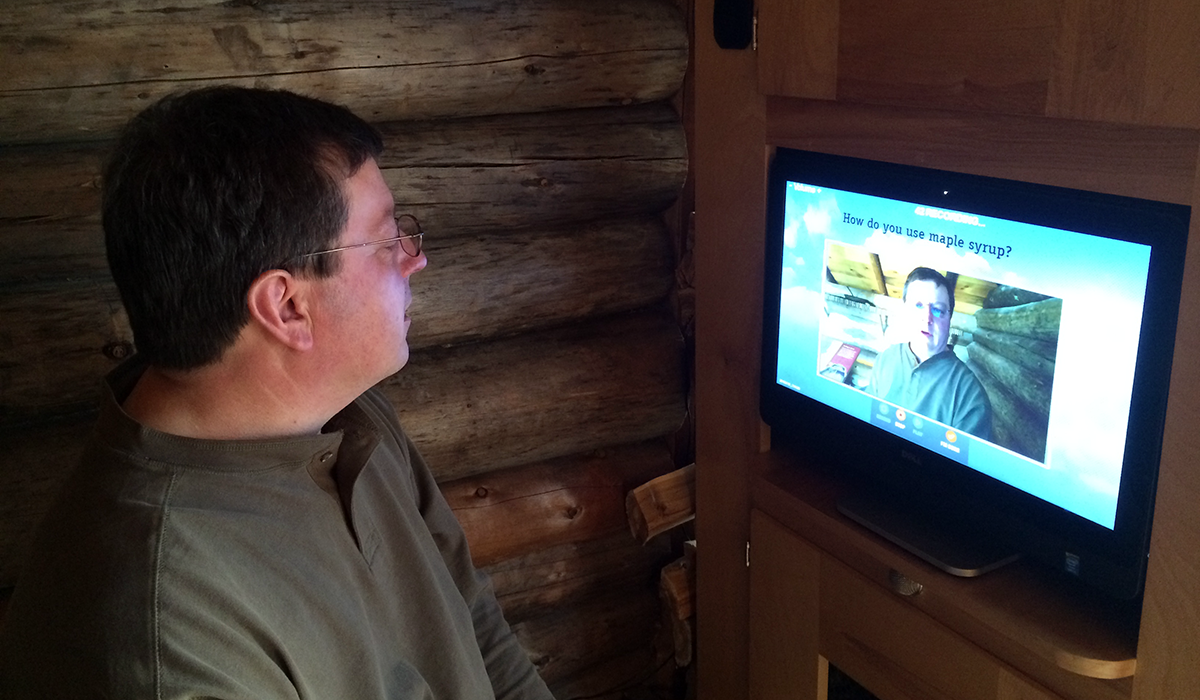
March maple madness
Once maple season arrives in the spring, the Maple Program at The Wild Center gets going full swing. Every weekend during March, The Wild Center celebrates all things maple! Visitors are invited to tour the sugar shack, try the maple quest, taste some maple treats at the Waterside Cafe, and take part in special maple programming. During NYS Maple Weekends (March 21 - 22 and March 28 - 29) additional programs will also be available. (Side note: I can tell you from personal experience, you might think that you are too old for cotton candy...then you try some of The Wild Center's Maple Spun Delight and quickly reevaluate. Just thinking about it makes me ready for spring!)
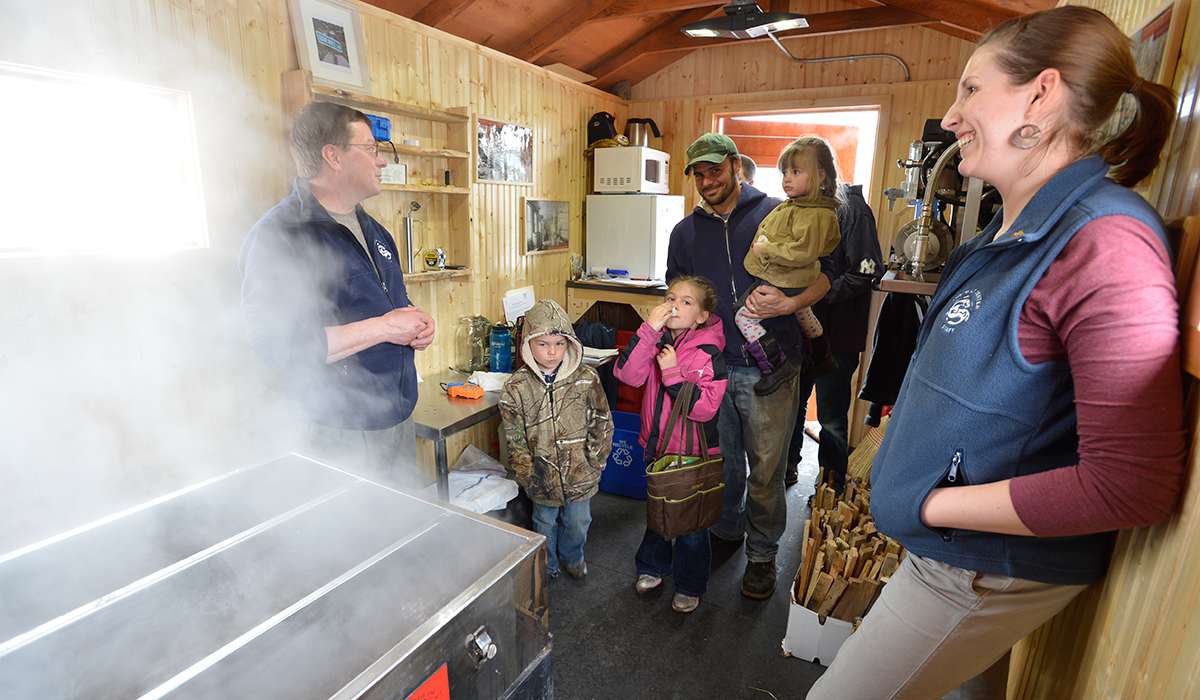
A maple legacy
The Wild Center's Maple Program isn't the first time that maple has made its impact on the local community. In fact, at the turn of the 19th century a sugar bush in what is now the Horseshoe Lake Wild Forest in Piercefield (just a stone's throw from the Village of Tupper Lake) was busy building what at the time was the largest and most state-of-the-art sugar bush in the world.
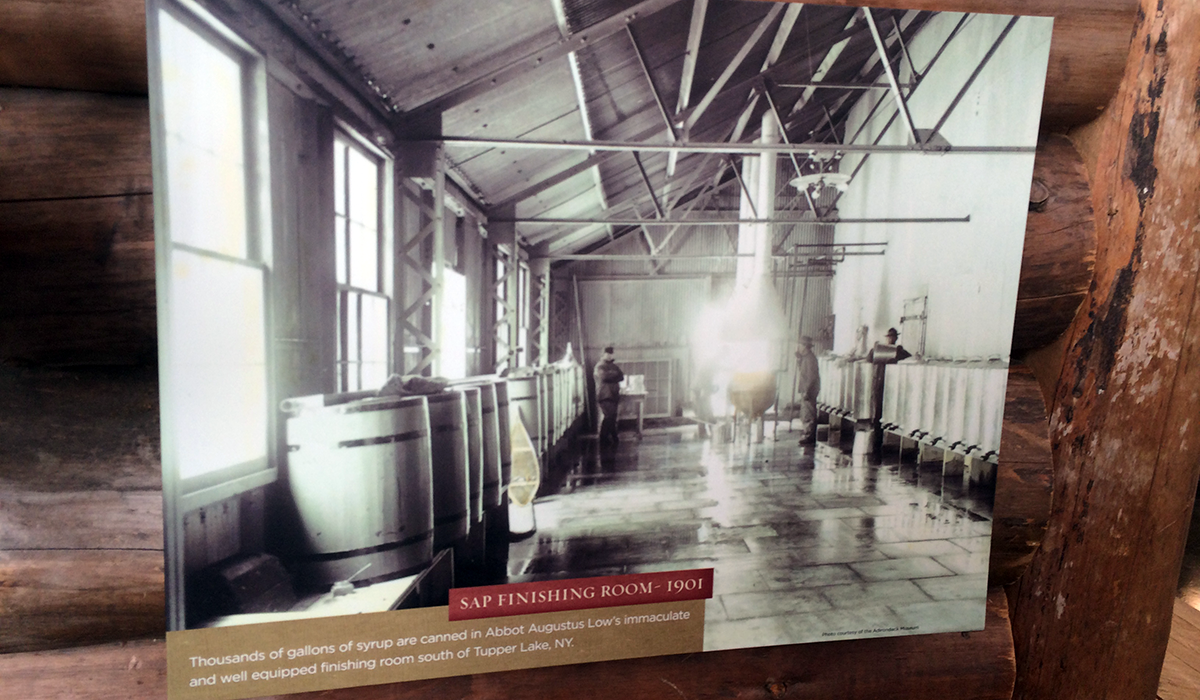
If you've ever had the chance to do some exploring in the Horseshoe - Bog River area, you may have seen remnants of the old buildings. These old foundations were once part of the Horse Shoe Forestry Company which was formed in 1896 by Abbot Augustus Low (also known as A.A. Low). The Horse Shoe Forestry Company started out as a logging operation but soon expanded into bottling spring water, maple syrup, and wild berry preserves. But this maple production wasn’t your run of the mill production plant for its time. A.A. Low was more than just a businessman, he was also an inventor. At the time of his death in 1912, he held the second most patents in the United States (the first being Thomas Edison). It was this entrepreneurial spirit and ingenuity that quickly brought this sugar bush up to producing at a peak of 20,000 gallons annually, making it the largest producing sugar bush in the world. This record was held in 1907, but unfortunately in 1908 a devastating fire caused from a spark off a train engine leveled the Horse Shoe Forestry Company's entire operation.
But until then, here are just a few of the many notable achievements from Horse Shoe Forest Company's maple operation:
- A.A. Low developed a square bottle (which he patented in 1899) to use to bottle spring water and maple syrup which he shipped via train to New York City. The square bottles not only allowed him to pack more per rail car, but they were also returnable. One of these bottles in now on display at The Wild Center.
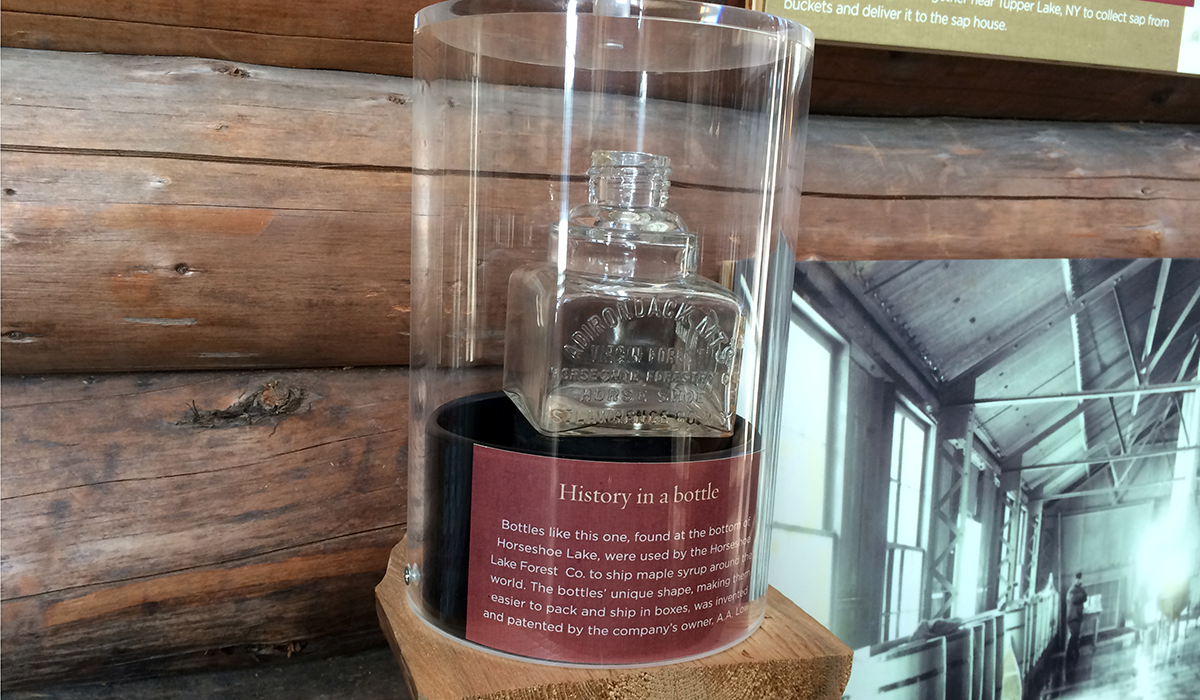
- Rather than simply using taps and buckets, Low's maple sugaring operation was one of the first to use a tubing system that used gravity to move the sap through pipes and troughs until it was closer to the rail lines and finishing house.
- Low's ingenuity rubbed off on two of the gentleman who worked for him (James H. Hill and John Rivett). They came up with the first evaporator system. Before then maple syrup was made in big cauldrons which were hung over a fire. With the evaporator, sap would come in on one end and run through a series of baffles and then into a finish pan, and finally would come out as maple syrup. Low helped Hill and Rivett patent this new invention. This is the same type of system that most maple producers still use today.
- The Horse Shoe Forestry Company also built two dams along the Bog River (Low's Lower and Upper Dam). These dams were designed to help drive logs and generate electricity for his operations. Today the stretch between these two dams makes a wonderful paddling trip. The upper dam also created "Low's Lake," which is another nice flat water paddle. (Note of interest: this area also has great camping as well as biking and hiking trails — making it a wonderful place to get out and explore.)
Plan a sweet trip
In Tupper Lake, we believe that it is never the wrong time to connect with nature; however, maple season does offer some unique opportunities. Come visit during the height of the maple production season and attend some of the great "March Maple Madness" programs that The Wild Center has planned. Make sure to find a room and stay a few extra days so that you can take a tour back in time with some exploring in the beautiful Horseshoe Wild Forest. Even consider hiking up Low's Ridge to get a birds eye view of the land where Low's historic maple operation once stood.
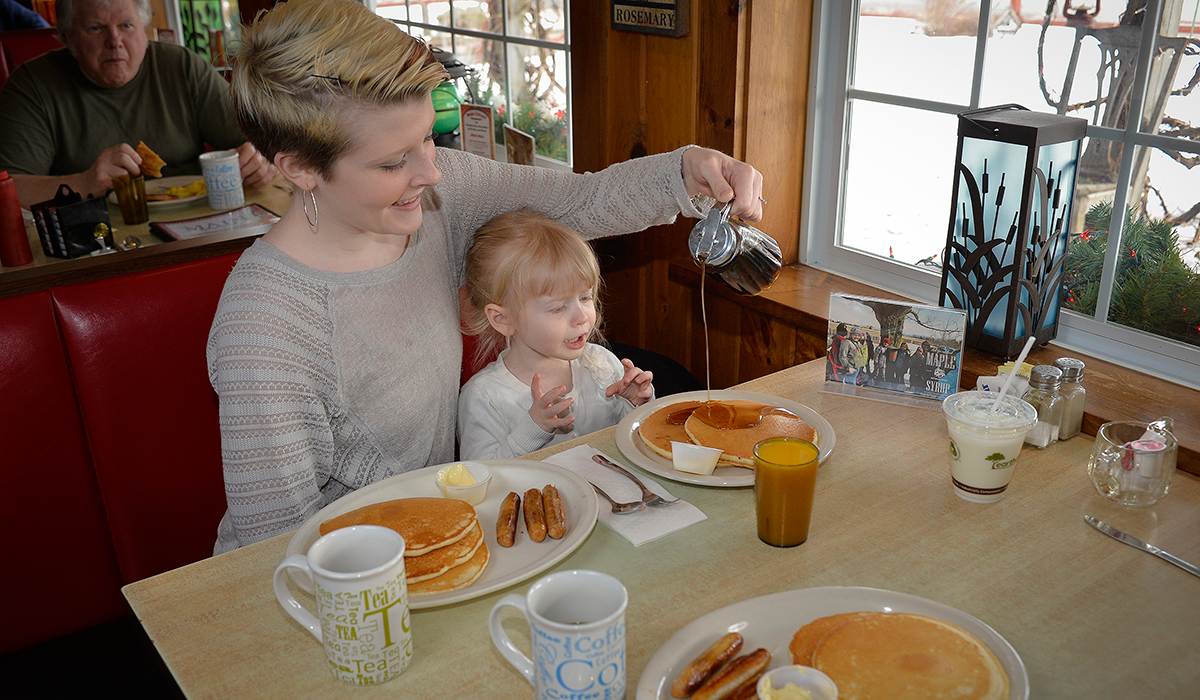
Insider Tip: Before you head out on the trail, make sure to order up a hardy Adirondack breakfast from one of our local diners which now serve up some of the Tupper Tappers pure maple syrup that is produced through the Community Maple Program.
--
This week in ADK news...
